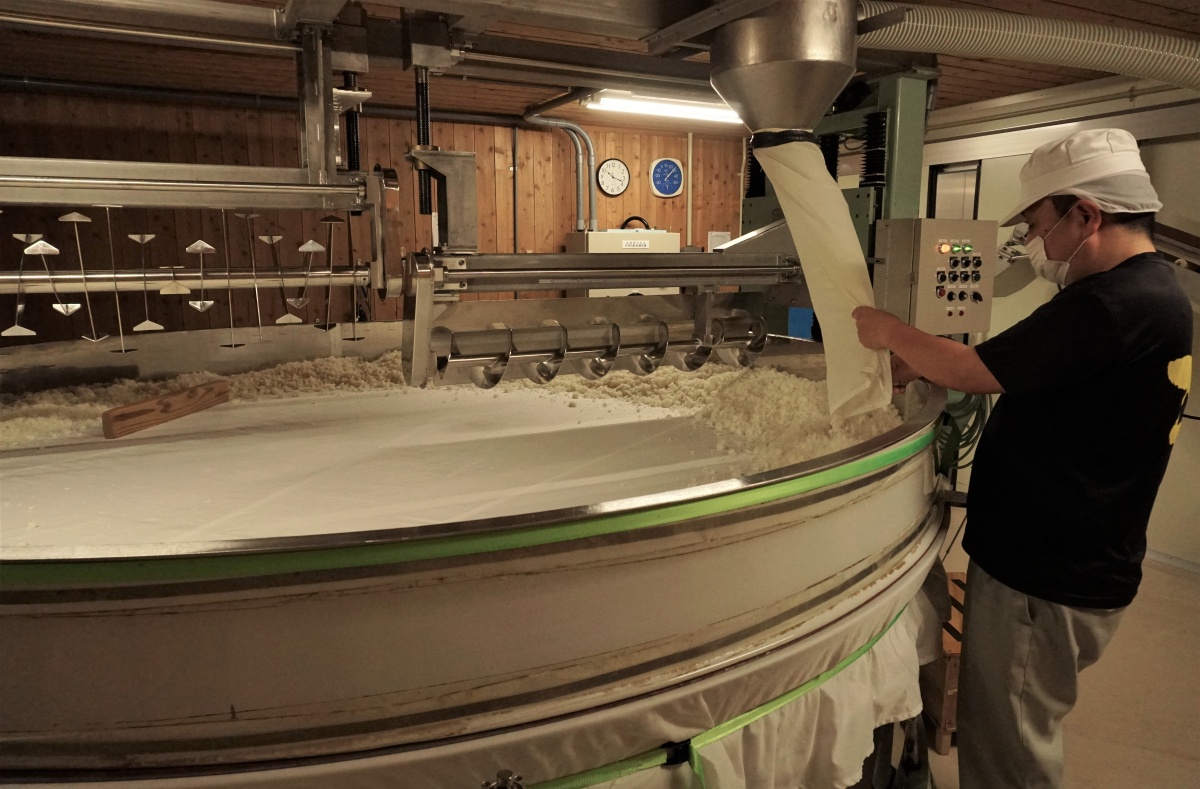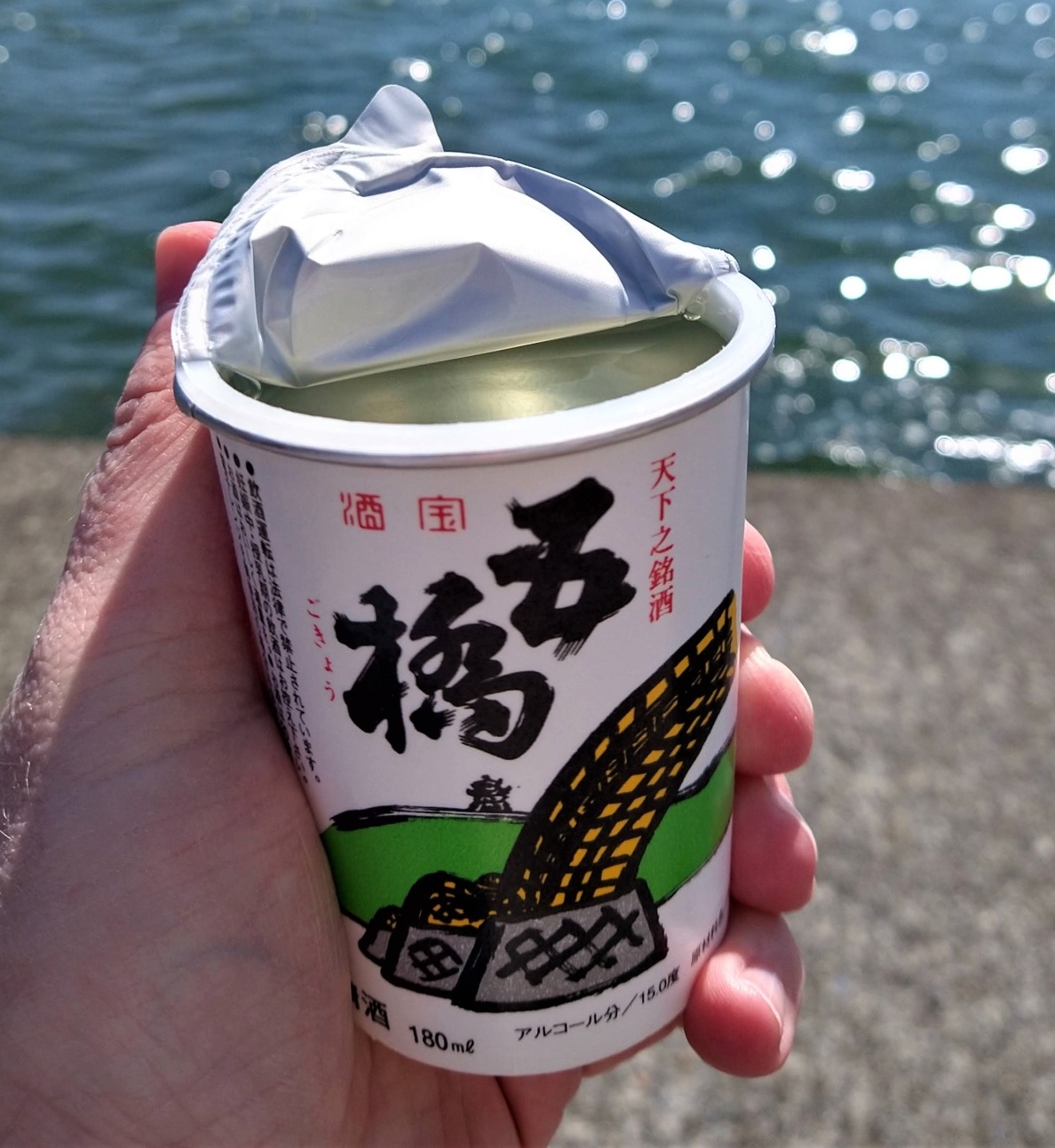Japan's "Table" Sake Is Anything but Ordinary
Futsushu, the generally low-cost class of daily-drinking sake, has something of a bad reputation. While not wholly underserved, this unfortunate fact has caused a lot of people to miss out on some great drinks. Learn more about the hidden treasures in this misunderstood class below!
By Jim RionThe Historical Heart of Sake

A brewer at Sakai Shuzo prepares to make rice koji mechanically, a way to manage costs for futsushu and lower end junmai sake.
To build the basics, let’s start with what futsushu is, and how it got its bad reputation. To do so, we need to talk about taxes.
Japan’s national tax agency is the big boss of the liquor industry. It defines alcoholic beverages of all kinds, including sake, to create taxation classes. The legal class for what we call sake is seishu–loosely translated as “refined alcohol.” This is a drink fermented from rice, rice koji (the mold that turns rice into sugar), and water, with a limited list of additives allowed. With me so far?
So, within the class of seishu there is another class, the tokuteimeshoshu, or “special designated sake,” which is a list of special names like junmai, honjozo, ginjo, and daiginjo. To use those special designations on labels, sake breweries need to follow a stricter set of guidelines than just the broader class of seishu. That means, for example, they have to use rice that has passed through official classification, the only additive allowed is high-proof distilled alcohol up to 10% by weight of the white rice used, and the label must include the rice polishing rate.
Seishu that fails to meet any of the guidelines is ineligible to the special designations, and so that sake is what people call futsushu. It’s important to remember, though, that name isn’t an official term. It’s just any sake that isn’t “specially designated.”
In other words, it’s just sake. The regular stuff. And it accounts for around 60% of all sake brewed and consumed in Japan. This is where the bread-and-butter sake, the daily drinking stuff, is and always has been.
"The result was, as you can imagine, kind of a mess."
So, how did its name get so damaged? During and after World War II, the government rationed rice due to shortages, so it very strongly encouraged sake breweries to stretch their rations through something called sanzoshu, or “tripled sake.” This meant they added large amounts of distilled alcohol, sugars, and organic acid flavorings to triple sake yields. The result was, as you can imagine, kind of a mess. After roughly a generation of it, though, the practice became normalized, and even after rationing ended it carried on. A change in the rules reduced the allowed additive amounts, and now sanzoshu is no more, although nizoshu (doubled sake) still exists. And this is the stuff to beware of.
Spotting the Good Stuff
The josen kanji and ingredients label on a bottle of outstanding Kotobuki futsushu from Yamaguchi’s Nakashimaya Shuzojo.
Because nizoshu relies on additives for so much of its volume and flavor, it tends toward low quality in general. It can be very coarse, rich, and heavy–and headache inducing. However, not all futsushu is nizoshu.
As stated above, any sake that does not meet even a single guideline is treated as futsushu. So, for example, if a sake brewery uses unclassified rice, does not want to list the rice milling rate or uses a rice milling facility that cannot offer a precise rate for labeling, that sake will be futsushu no matter how carefully made. The same goes for alcohol addition.
Apart from increased yields, adding alcohol to sake can help adjust flavor and aroma, and is a legitimate stylistic choice. The tokuteimeishoshu rules set the limit at 10% by weight of rice, while nizoshu is 50%. That is a huge range, with a lot of room for variety that breweries can play with, and can even help improve quality rather than harm.
So, this class of sake is filled with variety, and some of it is made with all the care and craft of any tokuteimeshoshu, while finding ways to reduce costs and keep it within the reach of average consumers.
Breaking it down, here is how to classify futsushu
- Junmai (sake with no additives, including brewer's alcohol) or honjozo (alcohol-added tokuteimeishoshu) that cannot be sold as such due to labeling laws
- Sake with added alcohol above 10% by weight of the total weight of sake rice used (not nizoshu)
- Sake with added alcohol and added sweeteners (nizoshu)
- Sake with added alcohol, added sweeteners, and added amino acid flavor elements (nizoshu)
- Sake with added alcohol, added sweeteners, added amino acids, and added acidic flavor elements (nizoshu)
How do you find the good stuff? Basically, avoid nizoshu. The top two on that list demonstrate futsushu that was made with care by breweries that do not want to take shortcuts, even on their low-price, low profit-margin expressions. These are often labeled 上撰 josen, in a reference to an outdated classification system, and are the true legacy of old-fashioned sake–as the often beautifully retro labels attest. Remember, these are choices the brewers made. They could have saved a lot of money by going the nizoshu route, but chose not to because they want to offer quality at lower prices.
Some to Look Out For
Koshi no Kanbai White Label
If, having read all that, you think you would like to try some futsushu but are afraid of choosing yourself, here are some recommendations to look out for. Do remember, though, that as a hyper local product there are going to be thousands of brands out that you can only find locally, so explore your region if you want to get a truly local taste.
1. Koshi no Kanbai White Label - This is the only futsushu I’ve ever seen that actually has the word on the label. This brew from Niigata prefecture is famous in the sake industry as one of the very first rural sake brands to hit it big in Tokyo. It is on the drier side, with a smooth finish despite a hefty flavor profile up front

A single-serving sized cup of Gokyo Josen, drunk on the banks of the Nishiki river in Iwakuni, Yamaguchi, across from the brewery itself. What could be more delicious?
2. Gokyo Josen - Yamaguchi Prefecture is filled with famous premium brands, but for local drinkers Gokyo is the alpha and the omega of sake. If you want to get a taste of where Yamaguchi sake came from, this is the drink.

Kuromatsu Kenbishi
3. Kuromatsu Kenbishi Josen - With a history of over 500 years, this is possibly the oldest brand of anything in Japan, and you can spot its distinctive black “sword and gem” logo in Edo period ukiyo e paintings. You can also spot it at pretty much every grocery store in Japan. It would technically match honjozo guidelines, but because the brewery refrains from printing the rice milling ratio on the labels it is sold as futsushu. It's a great, easy to find intro to the class.
There are literally thousands of other futsushu brands out there, and while not every one will be up your alley, the adventure of exploring their variety is well worth taking. The best part is, not only is futsushu priced within reach, breweries also tend to sell it in smaller sizes, making it even kinder to the wallet.
Good luck, and kampai!
More Articles about Sake
Simple Quiz Helps Find Your Ideal Saké
Sake Brewing in Saku
Ochoko and More! All About Sake Cups
A Great Selection of Sake from Across Japan



